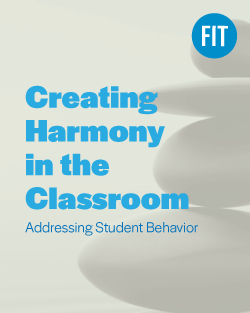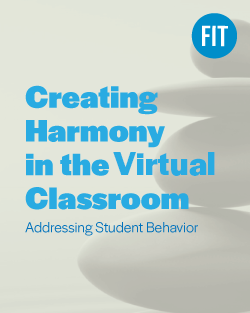Creating Harmony in the Classroom
A quick reference guide created by Enrollment Management and Student Success
Creating Harmony in the Classroom: Addressing Student Behavior
Today’s classroom environment has become increasingly challenging to manage. Our students
are entering the classroom with greater responsibilities and life stressors that weigh
heavily on their mental and emotional psyches. These life stressors often spill out
into the classroom environment resulting in disruptive behavior that influences classroom
dynamics, and has a negative impact on the overall student academic experience. As
classroom instructors, faculty have the challenging role of setting a classroom tone
that creates the necessary “space” for a safe and compassionate place of learning
and development. To that end, this guide has been developed to provide some strategies
on creating a harmonious classroom environment, and pointing out ways to recognize
and address disruptive student behavior.
Chapters
- Understanding the Differences Between Disruptive and Dangerous Behavior
- Strategies on How to Create and Maintain A Harmonious Classroom Environment
- Understanding and Effectively Using Campus Resources
- Resource List
Information for this guide has been obtained from "Addressing Disruptive and Dangerous Behavior”, The NABITA 2017 Whitepaper, and "Helping Students in Distress: A Faculty and Staff Guide for Assisting Students in Distress," Southern Connecticut State University, 2015.
Supplemental Guide
Creating Harmony in the Virtual Classroom: Addressing Student Behavior
Everyone across the world has been facing significant change in our daily lives. We are adjusting and trying to make sense of what is going on. Within the higher educational system, college students have been and will continue to transition to online education, socially distancing from peer groups and for many, hunkering down in their family homes trying to find a corner, a computer and a connection. Not easy for many. Faculty across disciplines have been scrambling to develop new means of course delivery and assessment as they convert in-person classes to remote learning. Everyone is worried about their health and safety and the health and safety of their loved ones.
We know that all this (and more) creates stress, but we also know that stress is a normal and even necessary part of life. As we all make this journey through life now impacted by the COVID-19 pandemic, this supplemental guide has been created as a helpful resource.

